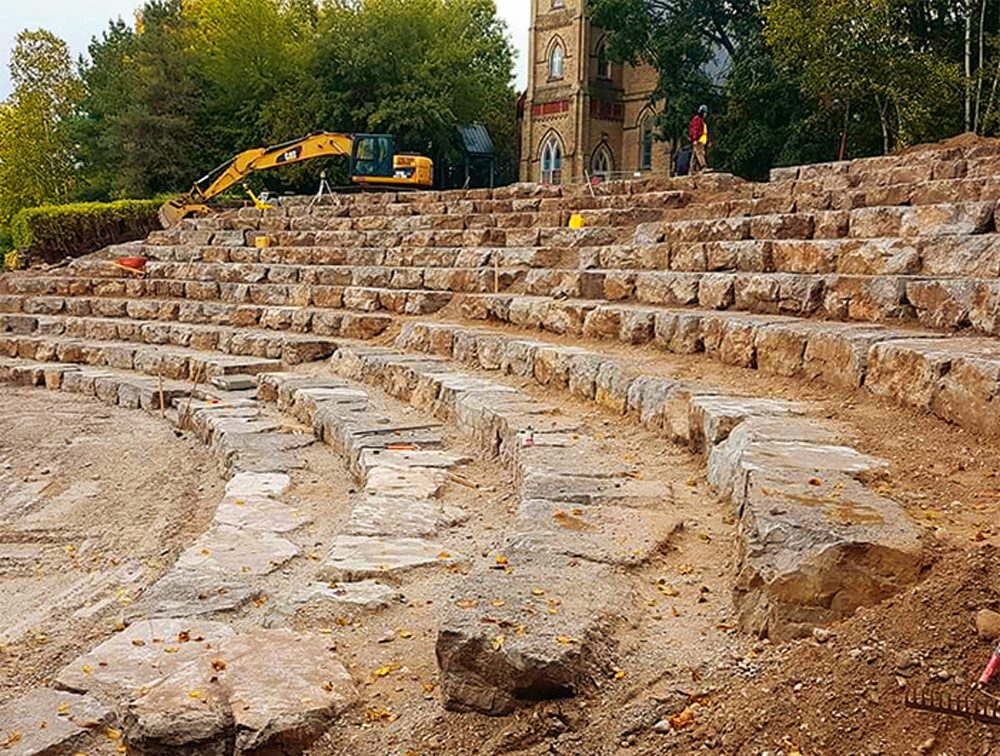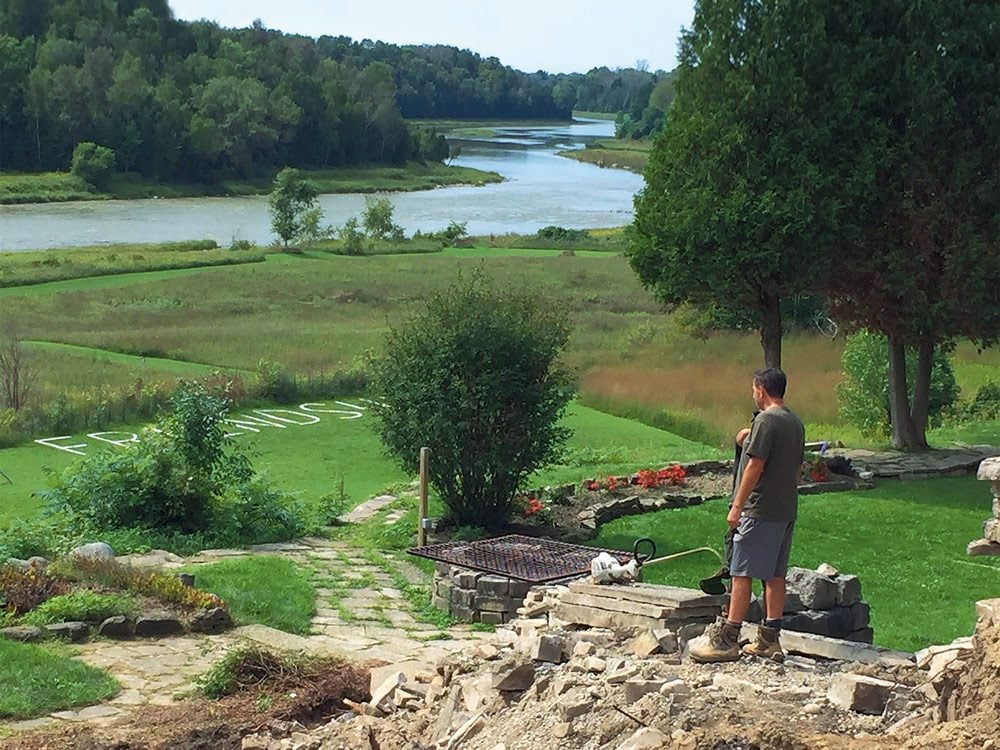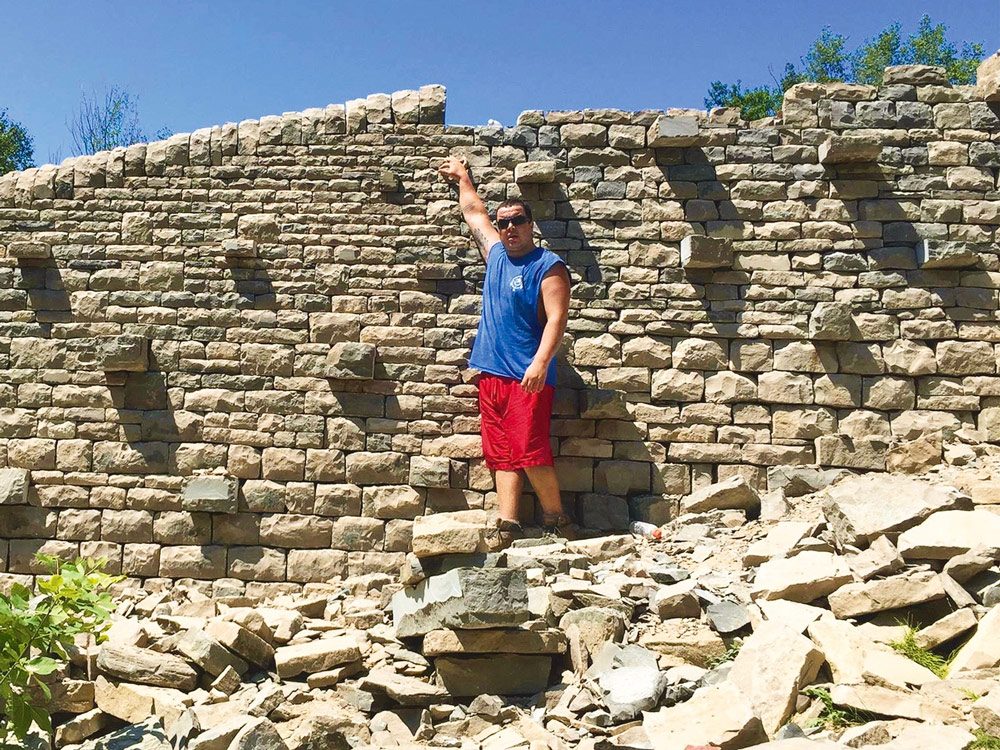
Restoring the Saugeen First Nation Amphitheatre
My colleague Jennifer Kewageshig and I (Richard Nancarrow) consider ourselves fortunate to be part of an ongoing community initiative that’s dedicated to the restoration of the Saugeen First Nation Amphitheatre in Western Ontario.
The amphitheatre was built in the early 1970s by Saugeen First Nation members, led by Chief James Mason in collaboration with the minister of the Wesley United Church, Reverend Earl Stotesbury. Both the reverend and the chief wanted to demonstrate the strong relationship between the local church and the Saugeen Nation, and foster greater understanding and friendship between Natives and non-Natives in the region. The amphitheatre project more than achieved that objective over the ensuing years.
Complementing the amphitheatre’s beautiful stone work are extensive gardens and nature trails leading down to the Saugeen River. Visitors from all over North America and as far away as Japan, Switzerland and Germany, have come here to enjoy the locale’s beauty, tranquillity and history. In addition to bolstering tourism in the immediate area, the amphitheatre was, and still is, used to host outdoor weddings, an annual fireworks display and a variety of community events.
By 2012, however, it became clear that major repairs were needed. The amphitheatre was assessed by a team of experts, who recommended that the walls, staircase and amphitheatre seating area be rebuilt. The walls were originally constructed using dry stone techniques, without any mortar. Dry stone walling has been used to construct walls for centuries all over the world; it has a unique beauty and is renowned for its functionality.
Learn about Canada’s oldest surviving warship.

A dream team of construction experts
The project team responsible for the restoration program is led by the Saugeen Chief and Council and coordinated by my colleague Jennifer. She is the manager of employment and training at Saugeen First Nation, and the operation and maintenance of the amphitheatre is her responsibility. It was Jennifer, who put together the team of construction experts in 2012 to evaluate the condition of the site and make recommendations for repairs. She also set up the initial training program for young men in the community to gain skills that would help support them and their families. She continues to coordinate the project and works with her associates in Saugeen administration to manage funding and human resources.
Dean McLellan, another valued member of the team, is a dry stone walling master craftsman with the Dry Stone Walling Association of Great Britain and an examiner/instructor. He oversees construction and runs the training and certification program. As for myself, I am a civil engineer and the project manager, and consider myself privileged to have a long association with the Saugeen First Nation.
Victoria residents remember the original Johnson Street Bridge.

The amphitheatre area will seat more than 1,000 people
The program to train First Nation members as dry stone wallers has proven to be successful and will continue throughout 2019. Ronnie Ritchie is a great example of the program in action. Ronnie joined the program in 2015 and has advanced rapidly. He now has his Level 3 certification and works full time with Dean on off-reserve projects and was the lead on the construction of the amphitheatre seating area in the summer of 2018, which has been completed.
The seating area required the use of heavy equipment, and Facca Construction, from Windsor, provided equipment and operators at cost to complete this important milestone. Many other individuals and corporations have supported the program, including Upper Canada Stone from Madoc.
With respect to related restoration initiatives, The Princess Staircase, which formed the entrance to the lower part of the site, has been completely rebuilt and new site features have been added, including a fire pit. Restoration of the walls around the seating area is now under way.
As 2019 progresses, we expect to complete the walls around the amphitheatre seating area. The gardens will be further developed, and we are going to build a visitor centre and reception area. We are anticipating that the site will evolve into a major international tourist destination and, locally, it will continue to be used for weddings and other events, with the added benefit of being able to host indoor receptions. The site will also be used by Saugeen First Nation for a variety of events and activities.
The amphitheatre area itself will seat more than 1,000 people and is sure to be a popular gathering point for locals and tourists alike. We are actively working with Indigenous and non-Indigenous theatre and music groups to create a schedule of upcoming performances at the refurbished site. The project and its inherent benefits to the community are truly something to celebrate!
Next, check out more awesome things you didn’t know were in Canada.